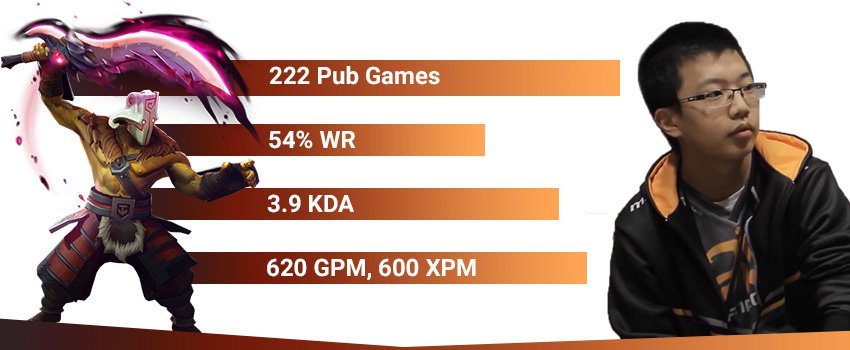Mechanics:
- Instant cast time – ideal for dodging projectiles
- While spinning, you can use your Healing Ward, but not Omnislash
- Blade Fury applies spell immunity and dispels certain buffs and debuffs
- The total damage dealt is 400/525/650/775
- While spinning you can attack:
- You don’t deal the attack damage to creeps and heroes, but you deal it to buildings, so you can use the skill to siege towers.
- Attack modifiers like Basher, Diffusal Blade, the MKB procs, Cleave, etc. work normally while you are attacking through Blade Fury even if you don’t deal attack damage.
Early game kill potential:
In the early game, you would most often use the spell for its very good kill potential. It is one of the spells with the highest total damage on lvl1 (400) – if you can stick to your target you could easily get kills. Needless to say, this is easiest to do with the help of disables from your allies.
If the target is running, you need to have a higher MS to be able to stick to it without the help of your allies – because of this getting Boots before your opponents is important for your kill potential with Blade Fury.
If you have higher MS, the best way to maximize your damage output is to right-click your target while it is disabled/slowed and then to activate Blade Fury when it starts running. If you know that the spin damage would be enough to secure the kill, however, you should start spinning right away because on early levels you deal more DPS with Blade Fury than with attacks.
Use move command: By far the easiest way to stick to your target while spinning is to issue a move command (click “M” on your target). This way the enemy hero wouldn’t be able to get out of the spin radius no matter how it changes direction. The only problem with this approach is that if the enemy target gets in the fog of war you would stop moving. Because of this when the enemy enters Fog you need to start issuing move commands on the ground in the direction the target is moving.
Don’t forget that you can use items while spinning. In the early game, this usually means activating your Phase Boots to catch-up to your target. Phase Boots also allow you to pass through creeps and stick to your target more easily.
DO NOT right-click your target while chasing with Blade Fury: If you right click it you will issue an attack command and Jugger will stop moving to do the attack animation – this will buy your target time to get out of the spin radius.
Late game offensive use:
Once you get high levels of crit and decent items you would deal far higher single target DPS with attacks. The only time you would want to use Blade Fury offensively is when you see that enemies are trying to disable you and you don’t have BKB. For example, if a stun projectile is flying towards you, you can start spinning to dodge it and to continue dealing damage to your target, possibly finishing the kill.
If you have Skadi or Basher, you should issue an attack command on your target when chasing with spin because of the utility of the attack modifier.
Use Blade Fury while pushing: Since you deal damage to buildings with attacks while spinning it is a good idea to use Blade Fury when you are pushing towers. This will make it much harder for the enemy team to initiate on you and defend. Be mindful of the spin duration – it is a good idea to move backward before Fury ends.
Defensive use:
The defensive use of Blade Fury is quite straightforward – you activate the spell when you feel in danger and run towards safety. Blade Fury will dispel some slows and other dangerous debuffs. Use any MS items (Phase Boots, possibly MoM) to create distance between yourself and your opponents while the spin is active. Pass through creeps with Phase Boots, don’t walk around them.
A great defensive trick is to use TP while spinning – enemy heroes aren’t going to be able to interrupt the TP with most abilities and unless they deal very heavy physical damage you will be able to get out safely.








